I have to confess: I’m addicted to Southeast Asia.
I arrived for the first time in Thailand way back in 2012. I was fresh off the plane, wide-eyed, with no idea what incredible things would await me. My plan was to go backpacking for one month, but I loved it so much that I continued to wander the region for a year. Ever since I’ve been coming back to Southeast Asia for more.
The best countries to visit in Southeast Asia depend hugely on what you’re looking for. They’re all great in their own ways, but there are always subjective reasons to prefer one over another.
Your experiences can also be hugely different depending on which places within a country you visit.
With that in mind, scroll along as I share with you a few insights from my many trips in Southeast Asia…
Quick answers
| Country | Best For… |
|---|---|
| Thailand | Cuisine, commercial resorts, scuba diving & snorkeling, islands, rock climbing, temples, nightlife, wellness |
| Laos | Quiet rural towns, jungle treks, homestays, river journeys, jungle ziplining, rock climbing |
| Vietnam | Cuisine, buzzing cities, motorbiking routes, floating markets, caving, mountain trekking |
| Cambodia | Temples (Angkor Wat), nightlife |
| Malaysia | Multicultural food, accessible national parks, colonial history, wildlife, islands, caving & mountain treks in Borneo |
| Singapore | Multicultural food, futuristic cityscapes, urban parks |
| Indonesia | Islands, volcano treks, commercial resorts on Bali, scuba diving & snorkeling, surfing, beaches (best ones outside Bali), wildlife, wellness |
| Philippines | Islands, beaches, scuba diving & snorkeling, surfing, hiking, rice terraces |
| Myanmar | Temples (Bagan), colonial history, cuisine, relatively untouristed places (Note: check current travel safety advisories) |
Thailand
Ahhh yes, I still remember what it was like to arrive in Bangkok for the first time. The temples, the neon lights, the smells of cooking oil from street food vendors, the tuk-tuk taxis whizzing past… it was like stepping into a whole new world.
Even though my heart may now beat faster for less-trodden destinations, I have to recognize just what an amazing country Thailand is. Especially for a first-time Southeast Asia trip.
Southeast Asia can be bewildering at first, but Thailand lets you ease into things; it’s exotic enough to feel adventurous, but the travel logistics are easy, and the famed Thai hospitality will make you feel at home even when almost nothing is familiar.
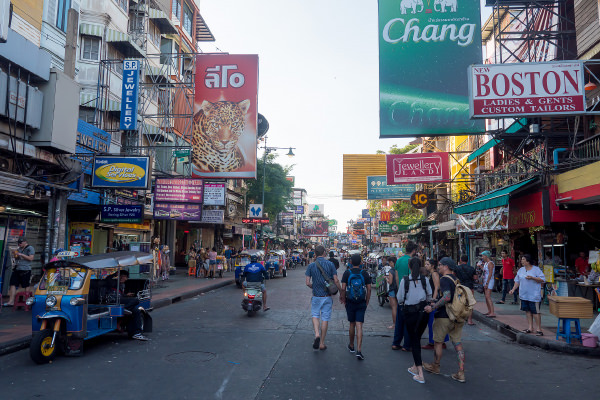
It’s true that Thailand has long been known for its mass tourism (in pre-pandemic times of course). In all honesty, in some places that shows. If you are seeking some pure undiscovered frontier, you probably don’t want to head for the beaches of Phuket! Luckily, mass tourism is also concentrated in just a few areas, so it’s easily avoided if it’s not your vibe.
One fun aspect of Thailand is that you’ll never struggle to meet other travelers if you’re looking to socialize. It’s an especially great destination for solo travelers. Because there are so many guesthouses, hotels, and hostels around, it’s easy to improvise on a trip to Thailand and just take things one day at a t ime.
If you’re simply looking for some sand and sun, then Thailand has got you covered. There is also a renowned party scene, particularly in Bangkok (Khaosan Road) and on the islands of Koh Phangan and Koh Phi Phi, attracting many younger holidayers and gap year travellers. The resorts along the coast meanwhile are popular with those looking for some luxury at friendly prices.
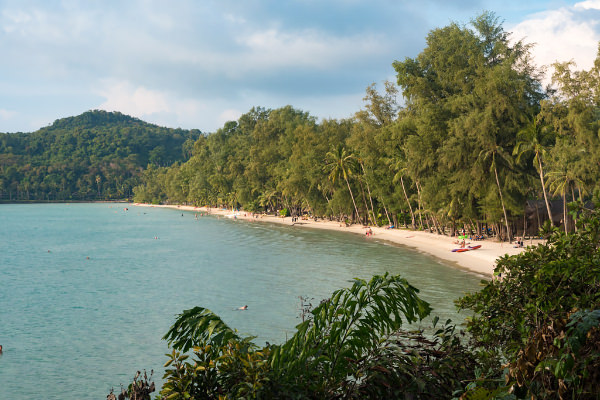
Interested in a more authentic (or simply quieter) Thailand? It’s 100% there if you know where to look. For example, I’ve much enjoyed exploring the quieter southeastern parts near Cambodia, especially the town of Trat and the Koh Chang archipelago. Northern Thailand also has plenty of off-the-beaten-track places, such as the Mae Hong Son loop.
Since Bangkok has so many international flight connections, Thailand makes for a great gateway to the rest of Southeast Asia. And to so many globetrotters addicted to travel (like me), Thailand was their first rite of passage. It may be a popular place these days, but who cares? It’s easy, fun, a little wild (in places), and truly has something for everyone.
For more tips, see my travel guide to Thailand and sample itinerary.
Don’t miss my Southeast Asia itineraries page with recommended travel routes that include several (or even all!) countries in the region.
Laos
Sure, sleepy Laos is not nearly as energetic as Thailand. But if you enjoy the Buddhist calm, Mekong river views, unspoiled nature, and authentic villages, then Laos is simply amazing.
Admittedly, Laos is somewhat lacking in huge iconic sights, like Vietnam’s Ha Long Bay or Cambodia’s vast temple complex of Angkor. The country is landlocked and there isn’t something ‘epic’ to draw people to Laos, but that’s also exactly why it’s so lovely to travel there.
Laos is the perfect destination for adventurers. Thanks to its many pristine jungles and karst mountain landscapes, it may well be the best country in mainland Southeast Asia for hiking and trekking. It’s also an excellent place for other outdoor activities like kayaking, zip-lining, caving, and rock climbing.
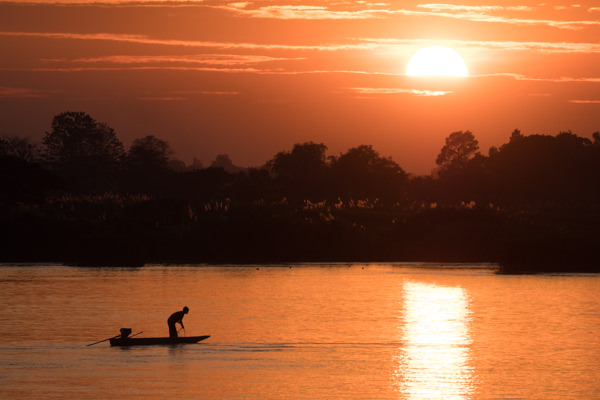
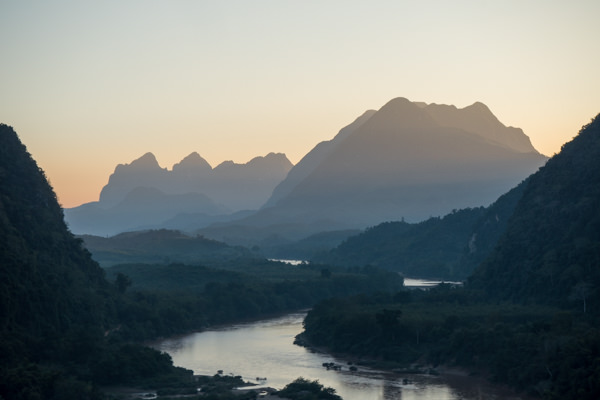
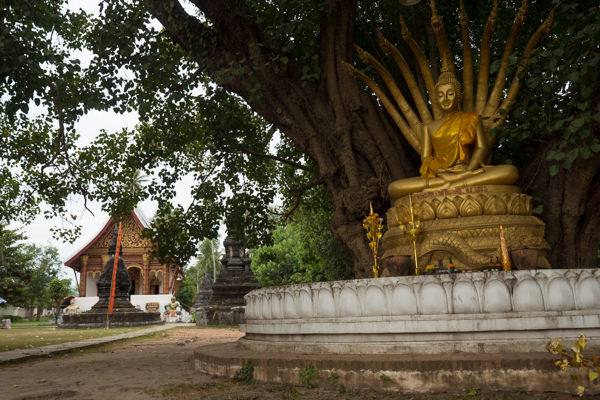
Life in Laos is mostly pretty quiet and rural. Due to midnight curfews, there also isn’t much of a party scene (contrary to what you may have heard). These factors have conspired to preserve Laos as an incredible ecotourism and adventure travel destination. Can you tell it’s one of my personal favorites?
Don’t miss the lazy 4000 islands archipelago in the Mekong, or rent a motorbike and explore the countryside. And consider a stay at the Gibbon Experience, which lets you sleep in treehouses high in the jungle canopy and fly around using zip-lines, giving you a unique perspective on the rainforest.
Go to Laos – you won’t regret it.
Read more in my in-depth guide to Laos.
Vietnam
The cities in Vietnam are truly on another level — among the most vibrant and chaotic in the entire region. In Hanoi and Saigon, snarls of scooters and small motorcycles will constantly pass you by, loaded with anything from construction materials to entire families. The local food markets are dizzying beehives of activity, enveloping you in a delightful sensory overload. Even more so than Bangkok or other capitals, the Vietnamese cities are such frenetic and exciting places to explore.
The central and northern parts of Vietnam are also dominated by dramatic mountain landscapes. At Phong Nha-Kẻ Bàng, you can visit some of the biggest caves in the world. The famous bay of Ha Long is dotted with countless limestone cliffs, feeling a bit like a mystical pirate’s hideout. You can go on a 1, 2- or 3-day cruise around these breathtaking islands, though don’t expect to be alone at this highly commercialized UNESCO World Heritage Site. (A quieter alternative is Bai Tu Long Bay.)

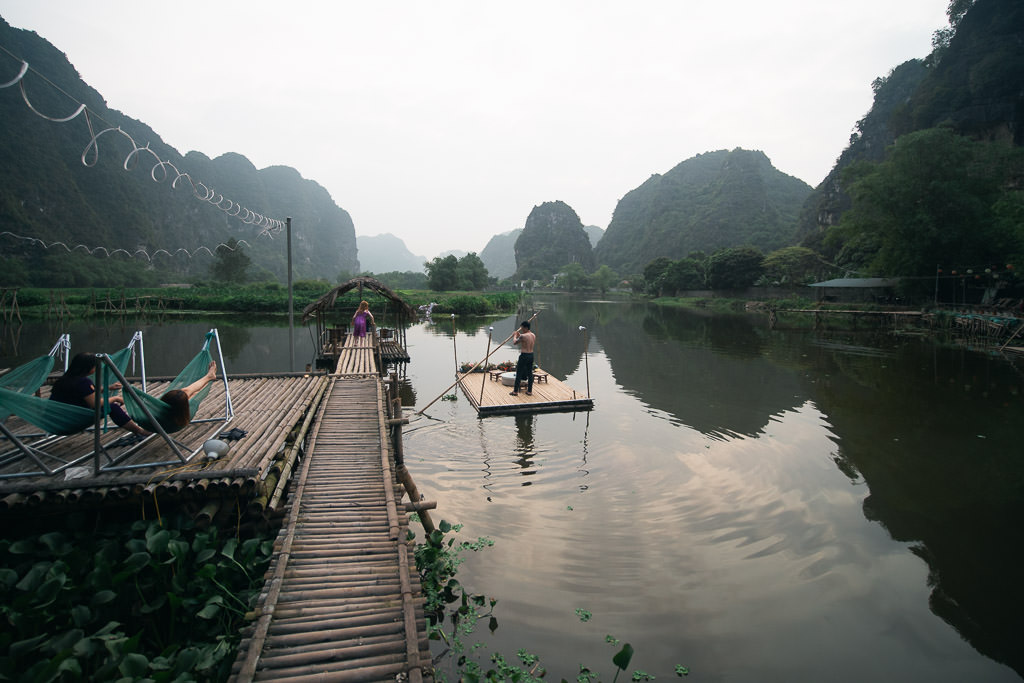
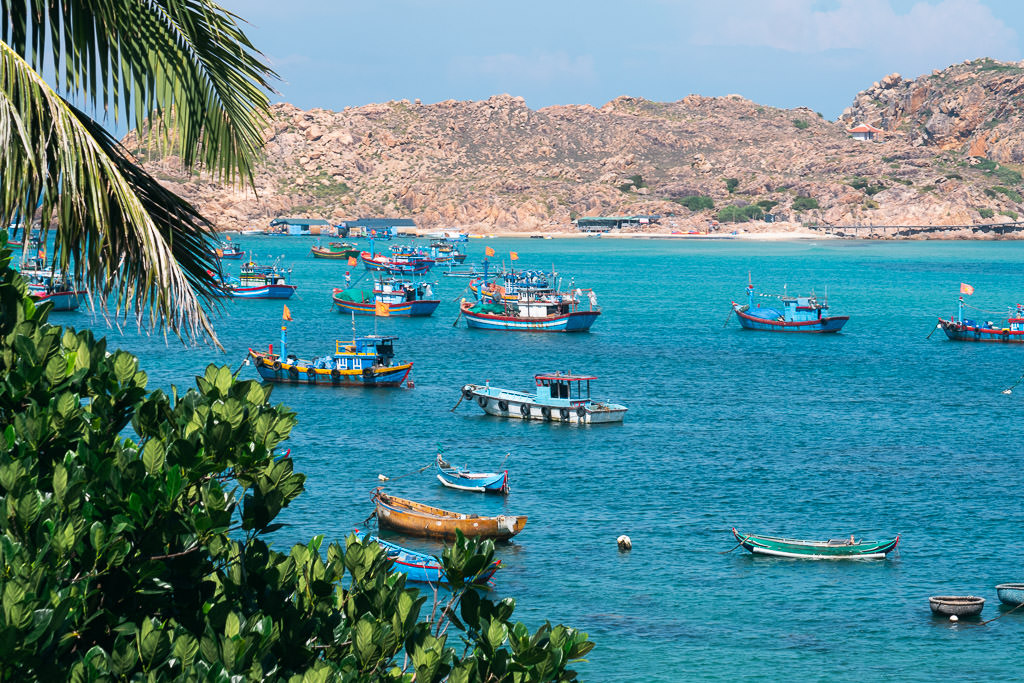
One thing that can be a bit off-putting in Vietnam at times are the local tours. If you do the standard day-trips and tours in the famous spots, like the Mekong Delta, Halong Bay, or the Chi Chi Tunnels, you might feel like you’re trapped in a bit of a tour factory, with quite impersonal treatment or inauthentic experiences. Some tourists who’ve only been on these trips may complain that Vietnam is overcommercialized or tell stories of tourist scams. However, this is not the real Vietnam!
I talk about this more in my backpacker’s guide to Vietnam, but if you diverge just a little bit from the standard itineraries, Vietnam becomes totally different. Among my personal favorite places are Phong Nha, Ninh Binh, and Ha Giang, for example, but there are loads more. Don’t miss my 12 must-visit places in Vietnam.
By the way, one of the best ways to travel Vietnam is by motorbike or scooter. Many travellers consider Vietnam the ultimate motorbiking country in the region, letting you see a side of Vietnam that not every tourist gets to see.
Cambodia
Cambodia is a relatively smaller country with somewhat fewer sights, so it is commonly treated as an add-on to a trip to Thailand or Vietnam.
The main destination is the spectacular Angkor Wat, which is one of the largest ancient temple complexes in the world. This sprawling site can take days to explore properly, and it’s easily of the top sights in Southeast Asia. The nearby city of Siem Reap has become a fun-filled base from which to take excursions into the Angkor Wat archaeological park.
But there is plenty more to keep you in Cambodia longer. I really like the Cambodian islands, which are still relatively less developed compared to those in Thailand or Vietnam. Koh Rong and Koh Rong Sanloem (among other islands) have a fun backpacker vibe and offer much more cheap accommodation than some of the Thai islands that by now have their own airports and large-scale resorts.
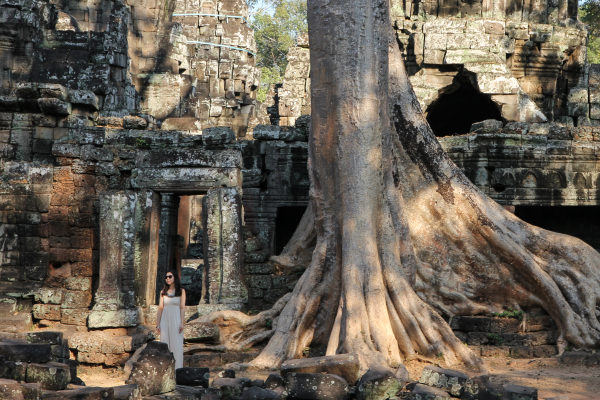
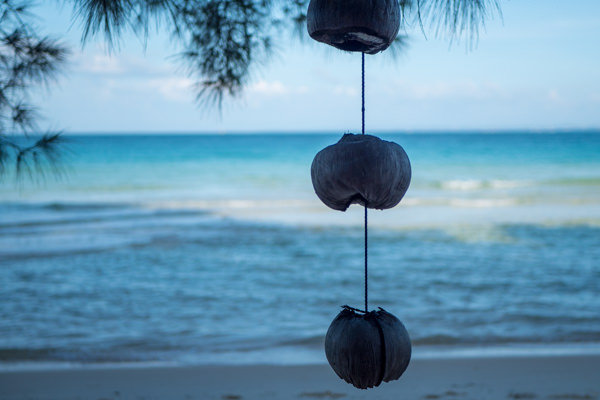
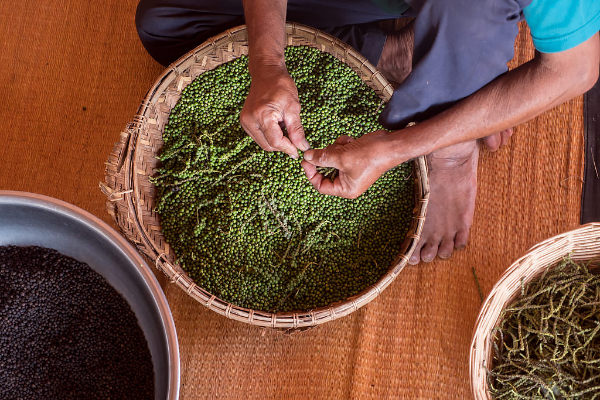
One thing that’s a bit of a bummer is that Cambodia has been ruled by the same dictator for decades, so the locals don’t have much freedom of speech, there’s loads of corruption, and there’s little regard for nature conservation (with only some exceptions). I didn’t notice these things on my first trip to Cambodia, but on a second visit when I went a bit deeper these issues were far more obvious.
Don’t bother visiting Sihanoukville, a seedy resort that’s been sold off to Chinese developers to build casinos. There are sadly some signs the lovely laidback Kampot is heading this way as well, with a large casino complex planned inside Bokor National Park. Cambodia’s dictator must be very pleased with the kickbacks he’s received.
Nevertheless, despite the situation, there are some amazing ecotourism opportunities in Cambodia. For example, Chi Pat is a small village in the middle of one Asia’s last truly uninterrupted rainforests and is focused on sustainable ecotourism. The town of Kratie is also well worth a visit; a quaint town along the Mekong River with remnants of French colonial architecture, with a chance to see rare Irrawaddy dolphins in the waters.
My guide to Cambodia has more tips on how to cherry-pick the best of Cambodia.
Malaysia
While Laos, Cambodia, and Vietnam were countries once colonized by France, Malaysia was once part of the British empire. That gives its historical cities a different character. Malaysia also often feels more cosmopolitan and multi-cultural, as it is home to a mix of Malays, Chinese, Indians, and various minorities.
Malaysia is a bit more wealthy, orderly, and conservative than its neighbors. It may be lacking that rough-and-tumble feel that charms many Western travelers in the other countries, but it also means Malaysia is not as over-the-top as Thailand. Its beaches and islands (such as the Perhentian Islands) are relatively low-key, and most of its other destinations are family-friendly and well organized.
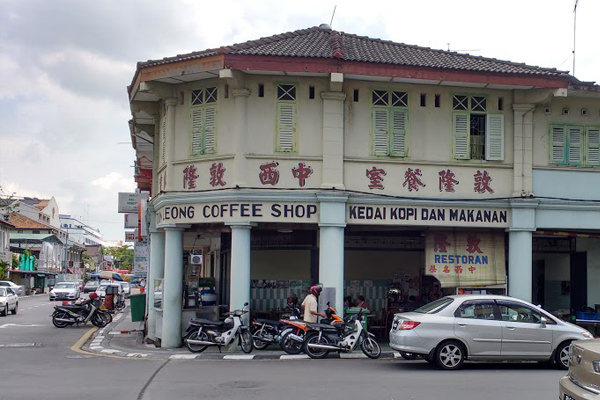
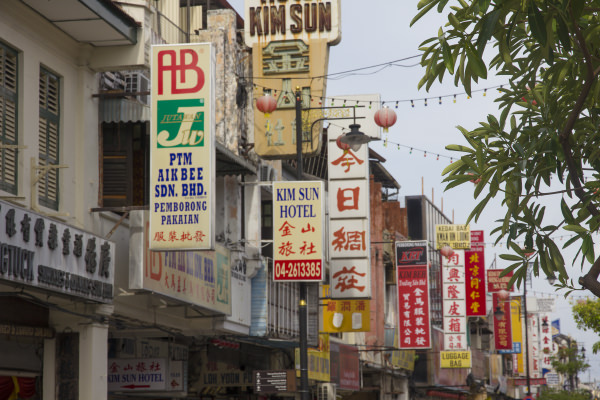
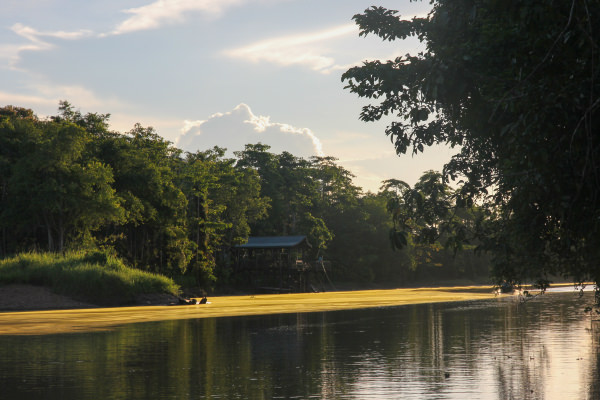
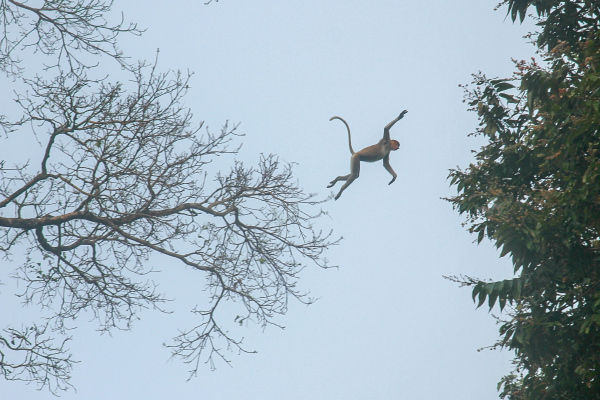
My knowledge of Peninsular Malaysia is a bit patchy, though I think the cities of Penang and Malacca are very interesting. I aim to come back someday to explore more.
As an adventure traveller, I was more enticed by the other part of Malaysia on the island of Borneo. I spent most of my time in the eastern state of Sabah, where you can climb Kota Kinabalu (the highest mountain in Southeast Asia), go scuba diving at Pulau Mabul and Pulau Sipadan, and visit national parks such as the Kinabatangan Wildlife Sanctuary (where even on a bad day you can spot countless monkeys, hornbills, crocodiles, and so much more). While Borneo is dominated by uniform rows of palm oil plantations, the wilderness further inland is absolutely thrilling.
By the way, be sure to budget a little bit more for Malaysia. Accommodation and food are great value, but local tours, hiking trips, or entries to national parks do add up a bit faster here.
Singapore
The city-state of Singapore makes for an interesting visit, especially given how strongly it contrasts against other nearby destinations. It’s spotlessly clean and high-tech and is truly a world apart from all the chaos, smells, and congestion elsewhere. It’s a meticulously designed place, often making you feel as though you’re wandering through the glittering futuristic visions from an architect’s dream.
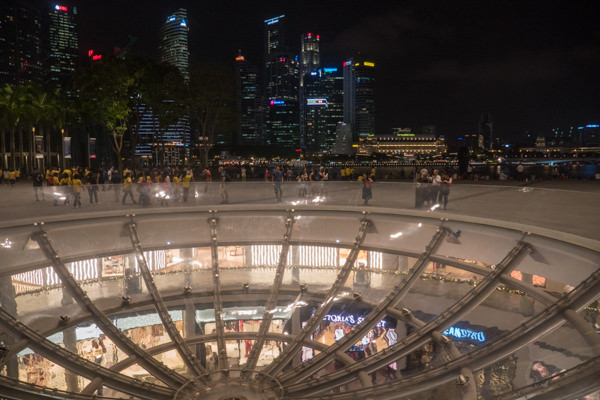
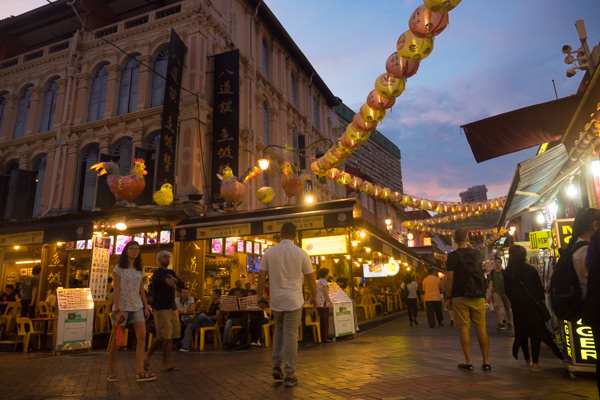
The modern comforts can be a refreshing change if you’ve spent some time in more remote places in Southeast Asia. The food in Singapore is also phenomenal and no visit is complete without going to one of its many hawker centers (a type of food court) where you can sample virtually any Asian cuisine — very cheaply and with hygiene standards much higher than the street food in other countries.
Singapore is an easy and comfortable destination, though parts of the city can also feel quite business-ey and too neatly maintained. It’s been getting more creative and vibrant though and the architecture and gardens are stunning. Singapore makes for a gentle introduction to Southeast Asia or can serve as a convenient pit stop on a larger trip.
Do keep in mind that prices in Singapore (apart from the food) are essentially at Western levels. That doesn’t mean it’s impossible to stay there on a budget though; I’ve listed some free or cheap things to do in Singapore.
Indonesia
To state the obvious: Indonesia is huge.
It is, in fact, wider than the United States. It’s so big that if you were to write a complete guide to Southeast Asia, you’d probably have to do a separate Volume II just to cover Indonesia.
Most travelers focus only on a tiny part — the resort island of Bali — but beyond it lies a vast area to explore, with incredible potential for off-the-beaten-track adventures. Blessed with 17,000 islands and numerous volcanoes, Indonesia is a prime destination for surfing, trekking, diving, and wildlife spotting (with a chance to see orangutans). It is culturally diverse as well, with different islands following the Muslim, Hindu, Catholic or Protestant religions.
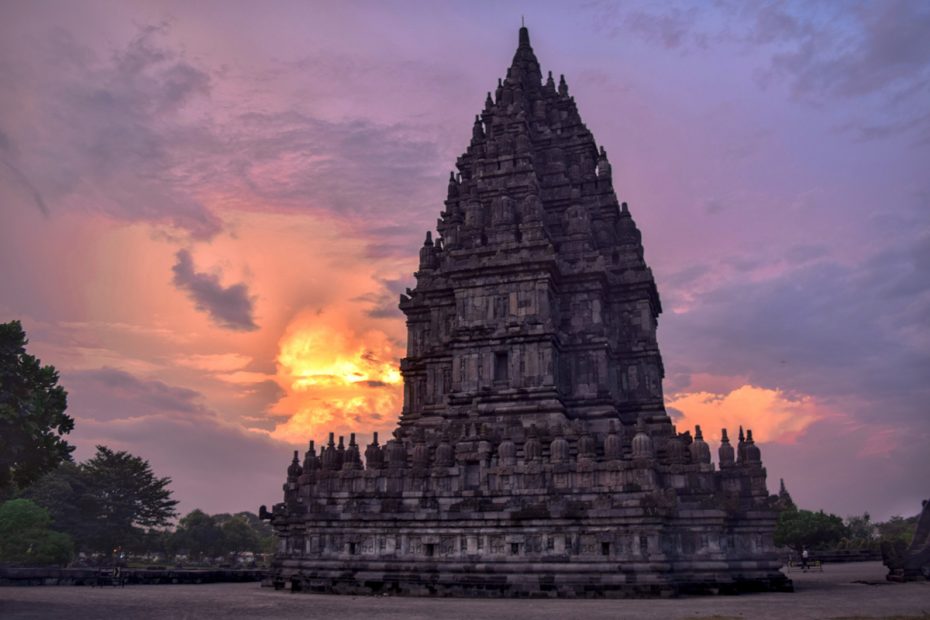
If you’re pressed for time, then spending a week on Bali is honestly not the worst idea. Its capital of Kuta may be nauseatingly commercial and focused totally on mass tourism, but dive deeper into Bali and you’ll discover plenty of beautiful Hindu temples, green rice paddies, and laidback beaches.
A typical longer itinerary has you starting in the city of Yogyakarta on Java, then visiting the ancient temples of Borobudur, the epic volcano of Bromo, and then ending in Bali. This post tells you, incredibly, how this can be done in one week — though I recommend at least 2 or 3 weeks for this route.

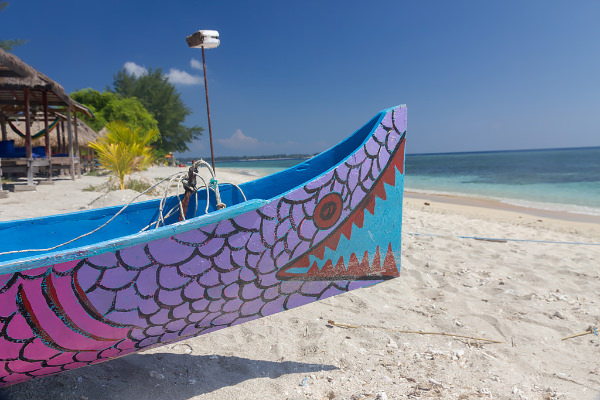
Lombok, the island that is adjacent to Bali, is filled with surfer spots, waterfalls, and quieter beaches. Further east, I loved exploring rural Flores and seeing the Komodo dragons at Komodo National Park.
So far I’ve been on two big trips to Indonesia, and I’m itching to go back. The next one will probably take me to the less-explored parts of Sumatra, Sulawesi, or West Nusa Tengarra. Indonesia feels to me like one of the final frontiers of Southeast Asia.
The country seems oddly overlooked among travel bloggers (at least outside of Bali), but I’ll go out on a limb and say it’s one of the real highlights of Southeast Asia.
For more, check out my run-down of all the Indonesian islands.
Philippines
The Philippines is not usually the first country in Southeast Asia that travelers go to, yet it is truly a gem and not to be overlooked!
Since most Filipinos speak fluent English, you can also get a lot closer to the culture. I’ve found myself travelling together with Filipino backpackers, made friends in many villages, and sung karaoke with locals. Elsewhere in Southeast Asia the language barrier can put you in a bubble, but much less so here. I can’t stress enough how much of a difference this makes.
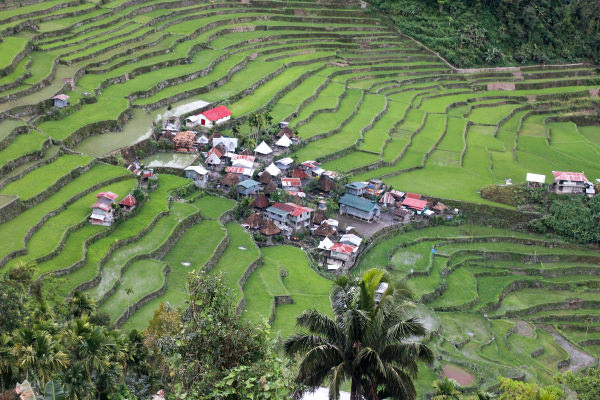
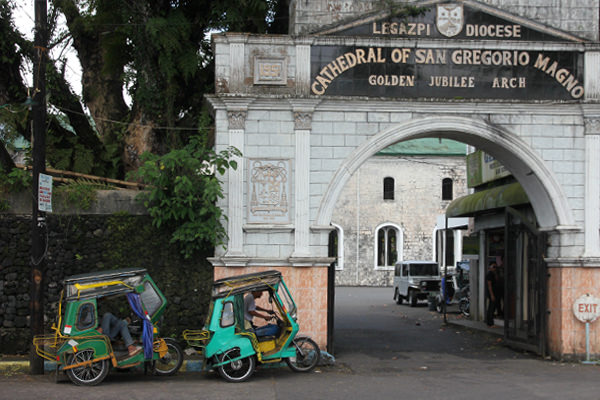
The Philippines also happens to have the most amazing beaches and islands, hands down. Although the word has certainly gotten out about some spots like the islands and lagoons around El Nido, there are far fewer tourist crowds overall.
The Philippines has over 7,000 islands, so it won’t be running out of amazing places to go any time soon! Palawan is always a big hit but definitely also go to the central Visayas — particularly islands like Bohol, Cebu, Siquijor, and Camiguin.
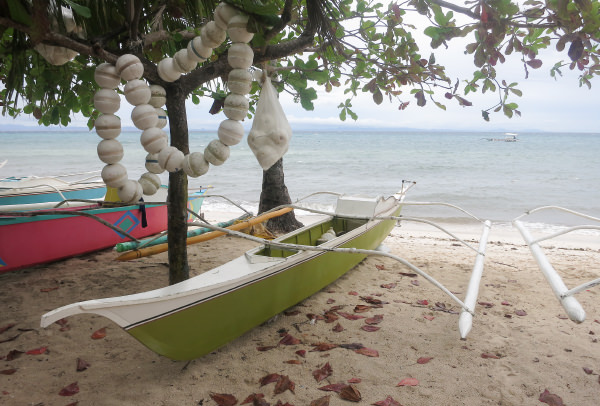
The Philippines used to be a Spanish and then an American colony, which is reflected in the religion, architecture, and language. The food does take a lot of inspiration from American fast food or Spanish asado and seems less concerned with Asian spices. Many Western travelers complain about the food, and I can definitely see why compared to the amazing Thai cuisine for instance, though if you look well enough there’s something to anyone’s taste.
Thanks to its incredible islands, stunning rice terraces, volcano hikes, lovely people, and a fascinating cultural melting pot, I think the Philippines is easily one of the best countries to visit in Southeast Asia. Be sure to check out all of my articles on the Philippines.
One tip though: it’s not worth staying in the capital Manila for too long, as it’s super congested and not the nicest destination in this otherwise gorgeous country.
Myanmar (Burma)
Sometimes countries take some steps back, and that is sadly the case with Myanmar. I visited some years ago when there was excitement in the air about the new democratic government and the borders opening up to international tourism. Now, Myanmar is embroiled in a civil conflict, and it’s unclear when it’s safe or responsible to visit it again.
What I loved when I visited before the recent problems is the relative lack of cynicism towards tourists in Myanmar, and how the country was still very much untouched by globalization.
The thousands of ancient temples at Bagan provide some true pinch-me vistas, particularly at sunset. Burmese cuisine is hugely underrated and a foodie is going to have a great time. It’s amazing taking a train at least once: the creaking old carriages may be slow as a snail but they are something to experience.
Hopefully, the political situation in Myanmar will improve in the future.

Still not sure where to go in Southeast Asia?
As should be obvious… Southeast Asia is a big region!
If you’re feeling a bit overwhelmed while planning your trip, I understand. Trust me… I’ve been there.
Honestly, all the countries in Southeast Asia are amazing (I truly think so). Try simply choosing some countries that sound most interesting to you and that fit your budget. If your budget is pretty tight, consider northern Thailand, Laos, Vietnam, or Cambodia. The other countries are not that much more expensive though. You can see my Southeast Asia backpacker budgets for more information.
You may also find my in-depth book helpful to you. Readers of Travel the World Without Worries have said it feels like having a friend sit down with you to mull over your travel dreams and turn them into real plans. I wrote most of the book after travelling through Southeast Asia, so it’s the perfect companion if you’re planning a trip. You can read the first chapter for free.
Some links may be affiliate links, meaning I may earn commission from products or services I recommend. For more, see site policies.
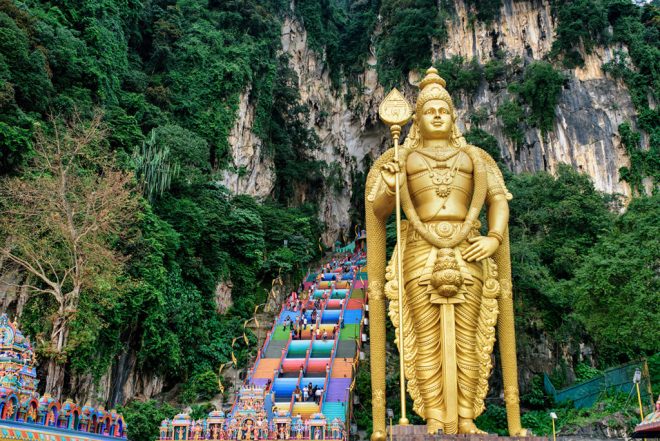
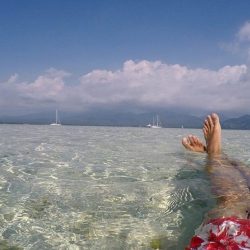
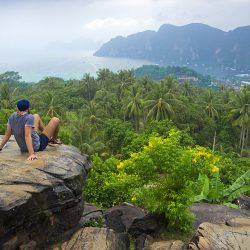




Congratulations on your new baby. She will be a world traveler in no time. Great post. I’ve also been to all these places in Southeast Asia, first in the early 1980s and continuing until 2019. I agree with your assessments.
As for me and my girlfriend Malaysia so far has been the best country in Southeast Asia so far, because they have 50% Malaysians 30% Chinese and 20% Indians living there, which means they have the BEST foods there in ONE country. And it is cheap!
To see what we saw, I made a video about the trip:
https://youtu.be/PVIt6SXdeTI
Marek, great look at the region. I’ve done lots of it, but not as much as you have covered– thanks for the inspiration to return! If you’re looking for a funny book set in SE Asia, do check out Chicken 65. It’s a road rally set in Thai/Laos/Cambo. free samples on the site. Happy Travels!
Sounds great, I’ll have to check that out!
Hello,
Any insight about Sri Lanka ? Unsure where you draw the borders of “South-East Asia” 🙂
Thanks !
Sam.
Yeah that one’s technically part of South Asia 🙂 It’s still on the list for me to go to!
Many thanks, Marek for your quick reply about children-safe beaches in South East Asia!!
Hi Marek, do you have any recommendations for safe-swimming beaches in South East Asia in August? Any but also in particular in Bali? Traveling with small children and we would like them to be able to go freely into the sea. I was in Seminyak last August and red flag was up most of the days with signs banning swimming
Not really sure, sorry Ana! I only know that Sanur on Bali is known as a very safe and family-friendly beach. I think it’s also a pretty lame beach though (not very scenic) but not sure what alternatives to suggest.
We’re gonna be travelling for first time with my girlfriend. Were torn between thailand or indonesia bali. Im also thinking about Pagan,Myanmar but i read some blogs regarding the political and security issues there. We’ll be travelling March 2019. Any suggestions or advise? Thank you so much
No real security issues in Myanmar that I’m aware of for visitors (despite recent political issues). The temples of Bagan are fantastic. Without knowing you it’s very hard to say whether Thailand or Bali is a better bet – some people love one but not the other, some people think they’re too touristy while others relish the ease of travel in these places!
Hi, thank you so much for your really detailed articles, they have got me so excited to travel SE Asia in the autumn! I’m heading to the Philippines in November, but I was wondering if you had any advice as to where to travel in September-October? I didn’t realise that it was still off-season, and I was set on going to Vietnam-Laos-Cambodia, but I’m a bit worried about the rain! Any advice will be welcome!
You could have a look at Indonesia as it’s in the dry season then. Or you could do the countries you mentioned but go north (instead of south / beaches). There’ll be somewhat less rainfall there, but also more city stuff / cultural sights that don’t rely on perfect weather.
Very informative and helpful! I’ve been reading lots of blog for southeast asia and most sounds so judgemental but this blog was so good. Thanks!
Thanks Maria, happy it’s been helpful to you!
What a great site! Thanks for the info. Our family of 5 with kids 5, 8 and 9 want to travel to SEA from NZ in january for 2-4 weeks. Weve been to many pacific islands so not fussed on beaches this time more interested in kids seeing some amazing history, culture, wildlife etc. They are quite adventurous and have done a lot of hiking. Which country would you recommend? Thanks!
Hmmm. Northern Thailand, Laos, northern Vietnam are great for hiking, outdoors adventures, culture, etc. I would think Bali (the interior) or Malaysian Borneo could be good for a family holiday too (with wildlife, volcanoes, temples, etc).
Hi Marek,
your blog is amazing!! Thank you for all of the helpful information.
We are panning to go to SEA from mid July to mid August for a month more or less (maybe 35 days if we can). I am aware of it being the rain season, but it is our only option for the moment.
I would deeply appreciate your help on planning our itinerary, since I would like to make the most of our trip taking the weather into account.
Our interests are hiking, nature, exploring culture and history, and food.
We want to travel lightweight, and are on a budget.
So the first thing to ask would be, which country is the best to visit during this season? I am really torn between Thailand, Vietnam and Cambodia.
Any other advice or information would be very appreciated.
Thanks in advance, lots of love (L).
Hey Irene. All those countries you’ve mentioned are great! There’s generally less rainfall in northern Thailand/Vietnam than in the south though. I’d maybe check out the rice terraces in northern Vietnam as they’ll be lush and green around this time. Hanoi is also amazing in any kind of weather. The mountain scenery in northern Thailand, Laos and Vietnam is great for hiking. So I’d probably start looking around those parts. Just my 2 ct of course, hope this helps!
Hi there! This is Claudia from Italy/Spain!
I’m doing South East Asia from 01/06 to 08/08 so two months!! I had the following route in mind (in sequential order): Thailand, Myanmar, Laos, Vietnam, Cambodia, Malaysia, Singapore, Indonesia and Philippines. This would mean roughly 7 days per country on average (does not mean i will spend just 7 days in a certain country). Do you think this is enough time per country, and in general, do you think 2 months is enough time of travel for the 8 countries I listed? I am scared of over planning and i really don´’t want to put THAT much on my plate otherwise I wont fully experience the bag packing feeling!
In case you think 2 months is too little for these 8 countries, which countries would you NOT do, and leave them for some other time to discover?
Thank you so much for the information posted. By far, the best website I’ve found when doing my research! Best of luck to you.
Claudia
Hey Claudia! You can do it if you really wanted to, but it’s a very intense schedule so personally I would choose fewer countries (and get more of that backpacker feeling)! It’s hard to say which countries not to do though as I like them all. My favorites are Laos, Indonesia, and the Philippines but it can be very different for everyone.
Hi Marek,
Love your articles. we are planning 6 weeks in SE asia this summer with our 13 and 4 year old boys. (did 6 months in india with our eldest when he was 4 so used to travelling with kids).
so far have a few days in BKK booked and then a beach break on Koh Kut. We want to venture into Cambodia after this then either Laos, Vietnam or
Both. any advice on what’s good to see? need to try and mix it up -culture, history and some beach life for the boys!
Hey Glenn. Hmm I’m trying to think what would be fun for kids. Chi Pat in Cambodia comes to mind (see my post here)… lots of jungle with cool animals. Maybe 4000 islands in Laos (kayaking, waterfalls). Hoi An in Vietnam. For history the war museums in Vietnam and Cambodia aren’t very child appropriate but the cu chi tunnels in Vietnam might be of interest…
Hi Marek, thanks for the very detailed article. The Philippines was not something that I had considered until this article. Where would you recommend in the Philippines for one week in early June? I’ll be coming from Ho Chi Minh City and departing for Singapore. Palawan seems like the best destination, but Bohol/Cebu is easier/cheaper to get to. I would ideally not like to stay in an area where it is too westernized. Thanks!
Yeah, Palawan is good, but I do hear it’s gotten too crowded lately. I highly recommend Cebu/Bohol!
Hi Marek,
Different line of questioning. I will be studying abroad in the Fall and am heavily contemplating Malaysia, Vietnam, Thailand & Cambodia…I’ve ruled out the others (Indonesia would have been my first choice otherwise) just because they don’t offer any programs with the courses that I need. Since you have traveled pretty extensively in Southeast Asia I am curious as to which of these countries you think you could have stayed in for 3 months or more. I am a bit put off by Thailand…it seems to have been exploited for tourism and not a place that will offer an authentic cultural experience (that also seems to be the case for Vietnam) nevertheless I would still like your honest opinion as to which of these countries resonated with you the most and is the most pescatarian friendly. Access to pescetarian/vegetarian food (I don’t mind meat based broths/stocks) is actually really important as I had a really difficult time the last time I studied abroad and would like to eat the local food as often as possible. As long as there is opportunity for adventure, music and food I am open. Also India is an option if you have been there.
Hey Sherley. Great question (it’s not one I get usually!). There’s a big difference in visiting a place briefly and staying there for several months. Thailand is very touristy but that’s much more easily avoided when living there. But anyway, I’d maybe look at Vietnam. I know a few digital nomads and expat friends who taught English there and loved it. Ho Chi Minh City seems quite popular among those who are staying longer. Plenty of seafood & veggie there too. If you’re staying somewhere for a while, you can definitely find the authentic cultural experiences – more time to make local friends!
Much appreciated is your quick and helpful reply! Thank you!
Hey. Marek, we will be in Thailand for a sporting event until 9/12/18 and would like to explore another country in the time we have left till the 15th any recommendations. ? Many thanks Niki
It’d difficult to say not knowing what kind of stuff you’re into! But I recently traveled in Laos again and it’s amazing for nature, trekking, and culture.
Hi Marek! This is Tomas from Portugal. I am currently planning a trip to SEA and your website is packed with solid insights! I need your opinion if possible. Im planning this trip to visit as many countries possible but I dont know whether to do 2 months of travelling or 3 months of travelling. What do u think best? Taking into consideration it would happen between May to July or to August depending on the duration of the trip and the expenses attached to such an adventure. Just need a break from this corporate world! Thank you!!
Hi Tomas. All I can say is: try to go for as long as your finances and situation permit. If you can stretch it to 3 months then why not! It’s rare to have a break from your usual life, and you’ll surely love having another month to travel. And if you get a flexible ticket, it’s possible to move your flight should you not have enough money left to continue. Greetings from Lisbon! 🙂
I guess you are right!!! Flexible ticket sounds like the best option; better intensify my saving mode then!! Which country would you start flying in? It would make more sense starting in Myanmar and then start the quest down south no? All the best man!
There are countless possible routes. 🙂 Myanmar is not a bad place to start! It’s full of cultural highlights and isn’t as touristy yet as some other countries.
Hey there,
Thanks a lot for the ton of information provided on your blog. I’m still looking for a little bit of advice tho, I’m planning a solo trip to SEA and am looking to land in Bangkok mid-August and I plan on staying either 3 or 4 weeks. I’d like to avoid mass tourism and fly-and-flop holiday-resorts, I’d like to spend most of my time in nature and I am also interested in Buddhism, that’s why I was thinking of heading to North-Thailand first and visit Sukhothai, Chiang Mai, Pai, Pan-Ung, Mae Hong Song, Chiang Dao, etc. From Chiang Rai I’d like to get to Luang Prabang with the slow-boat (which somehow sounds appealing to me), sadly enough there’s not that much in Laos that sparks my interest (except the slow boat, LP and maybe Kuang Si Waterfall), also I’d like to see a part of Vietnam. On top of that I need to end in Bangkok to get my flight back. I know this is a little bit too much for 4 weeks so that’s why I’m asking for your opinion on what things I might better drop and also what part of Vietnam you recommend me to visit.
Thanks in advance!
Hey Jordi. Judging by the places you mention for northern Thailand, maybe you’d actually like northern Laos a lot. Have a look at Nong Khiaw for instance, perhaps it’s a place you’d be into – calm and a lot of nature. (What I have about Laos on my blog is in dire need of updating! I’m working on this right now.) I think the nicest part of Vietnam is the north, in and around Hanoi, so if you can fly back from there to Bangkok you’d have a really nice route. Try to do 4 weeks though… 3 weeks is going to be very tight for all of these places.
Marek, it is Penang, Malaysia not Pengang, Malaysia. Hehe
Oops! 🙂
Hi Marek,
I have read through many blogs and I’d agree with the comments made by others that your blog is one of the most complete blogs I have had the opportunity to read and find use of.
I am currently 2.5 months in on a 5-6 month sabbatical traveling around the globe to take a break from the corporate world. I have traveled to 18 countries and 24 cities chasing the summer so in October I will do 1 month in Asia and your descriptions and references have made me a bit more confident about my plans there(Dont overplan, relax and go loca<—GREAT ADVICE), which are a bit less hectic than the previous 2.5 months I've traveled (longer periods of time in one place is better).
BTW- I will be in Lisboa for 6 days next week so your advice there is also great! Maybe we'll run into each other if you are there!
Guillermo (castawaymemo)
Hey Guillermo! It’s definitely nice to slow down a bit, especially after a few months. I think Asia is the perfect region to do this. Hope you’ll have a great time. I go to many couchsurfing and nomad meetups in Lisbon so if you see me, say hi! 🙂
Hi,
I am planning to travel around Southeast Asia and I need some advise on the logistics part. My plan is to fly in to Thailand and travel to Vietnam through Cambodia for tha first part. Do you by any chance know or do you know where I can find out if there are any train services from Thailand to Vietnam and where the stops are?
And for the 2nd part I am planning to fly from Vietnam to Singapure and make my way down to Sumatra, Java, Bali and/or Borne? Do you know if there are any public transport between the islands?
Thanks for you help! I really appreciate it!
Barbara
Hey Barbara. There are unfortunately no train services in Cambodia. This map shows you the routes.
You can take a ferry from Singapore to Sumatra, and from there everything is connected by buses and ferries. You can get all the way from Singapore to Bali by public transport. It won’t be fast but you’ll get there eventually. 🙂
Hope this helps!
Thanks for the quick reply!
This map is very good and your blog is very helpful! Thanks for all the hard work you put into it!
Barbara
Glad it’s helpful. Good luck and hope you have an amazing trip! 🙂
Very useful guide. I especially enjoy your section about getting off-the-beaten. Parts of the charms is really how rural some parts can be, like Ha Giang in Northern Vietnam and West Sumatra in Indonesia. Beautiful region, I must say!
Hey Marek, your blog is amazing! It’s really interesting and informative. im a 16 yo Indonesian, and im planning to go backpacking with my friend to other Southeast Asia country next year, but we’re still thinking about which country. Any reccomendation or tips? Thanks!
Thanks Rangga! Oof, that’s a difficult question. It depends on what you like. 🙂 I recommend reading a lot about each country and going to whichever country has the most of what you’re looking for. Since you’re already from the region, I don’t know what would interest you most.
Hi Marek, I was wondering if you could give me suggestions for Myanmar. I think I will only have 6 nights, maybe 8 if we are lucky, but I want to be able to get the most out of my experience. Thank you so much 🙂 Your blog is amazing, by the way….
Hey Isabel – just replied to your email. 🙂 But the gist of it is: I’d probably do a little circle in the north (Mandalay / Bagan / etc.)
Hi Marek!
Its Nacho, from Spain. Firstly I want to thank you for making this amazing website, it is the best I found. It is helping me a lot to plan my trip, so thank you!! Well, I am planning a solo trip to Thailand, Laos, Cambodia and Vietnam, do you think three months is enough time to get a good taste from these countries? I am not interested in highly touristic places, but I know I will go to some of them such as Angkor Wat. I have a couple of questions for you: which hostel do you recommend me for when I arrive in Bangkok? I would love a social hostel with a good atmosphere where I can meet fellow travellers. Is it necessary to prove you are leaving the country in one month to get your visa in Thailand?
Thank you so much! Good luck with your future travels!!
Peace
Nacho
Hola Nacho!
I think you can get a great taste of these countries in 3 months. It’s more or less the perfect amount of time. I have some hostel recommendations on my Thailand page. I like Suneta, which is very cosy and friendly, though it is a bit small / boutique-style. If you’d prefer a bigger hostel with maybe not as much character but with definitely a lot of people, Lub D is a good bet.
Officially you need a confirmed return ticket for the visa-on-arrival, but I’ve never had to offer such proof myself. I’ve had advance visa via the Thai embassy where no questions were asked, and I’ve had visas on arrival with no questions asked. This seems quite common for EU travellers. If you have a return flight (even if it’s 3 months later) you should be in a good position to explain that you’re visiting multiple countries in SEA. I can’t give a perfect guarantee but your visa process will most likely take like 5 seconds. 🙂
Good luck and have an amazing trip!
Hi,Marek
Great stuffs! Your site does stand out and thanks so much for the great info !
I had been living in HK so have been to all the popular places and find that I always go back Thailand for it’s food and ppl and Phuket.
My bf will join part of my trip next month, and prefers to explore other countries other than Vietnam and Thailand where he has been.
Wondering where you’d suggest for a 2 week snorkling holiday other than Koh Tao ? I will be on my own most of time so a solo traveller friendly place will be great. Thanks
So you mean outside of Thailand, right? El Nido in the Philippines comes to mind, or maybe Bali. It’s a difficult question to answer though as I don’t know where you’ve already been 🙂
Your website is very helpfull, thank you very much.
I am planing a four month backpack trip through Asia (and hopefully Australia.) I have way to many places i want to see, so i know i have to save a few for the next adveture. I know it depends on the city and the traveller, but i was wondering approximately how many days you would recomand in each city? Do you think a week would be enough in each city?
It all depends. For instance, some people could easily spend a week in Bangkok, but I would probably leave after a couple of days and head towards some nature, beaches, or just a more relaxed city like Chiang Mai.
If you want to get to know a place really well then a week is perfect. But you don’t have to decide this all in advance. You can just go and play it by ear, and stay longer or move on depending on how you feel at the time. In Southeast Asia, this is really easy to do.
Awesome article!! I went to Thailand for a month then off to China and South Korea for a couple of weeks in spring 2016 and fell in love with the region! Im planning a return trip spring 2017 & want to do Vietnam/Thailand again (for songkran 2017, I went this past spring and it by easily the most memorable days in my journey and some of the best days of my life!)/ Cambodia/ Bali & Gillie T & would like to finish off in Philippines. Just beginning to somewhat organize my trip and this has been extremely helpful!
Glad to hear, Adam. Sounds like you’re planning a fantastic trip 🙂
Love this blog! I am going travelling this year and will be starting in Oz then going to Asia but have no idea where to even start! This has helped me loads! Thank you so much.
Thanks for this extremely detailed article! 🙂
Despite the fact that I traveled Southeast Asia a couple of times it’s still really helpful post. And thanks for sharing these amazing photos, they’re so inspiring! Time to organize next trip 🙂
Keep this excellent work up! 🙂
Splendid stuff ! Super useful ! Thanks for the effort !
Thanks Lukas! 🙂
Great intro summaries Marek. I have to say, I’m so surprised at how many people felt Vietnam had a rip-off culture. I travelled there for a month and have not felt it at all, and definitely less than in some other countries in the region, i.e. Thailand. My experience was actually opposite – Vietnam was one of the few places where locals we met on the road invited us for dinner, fed us, gave us beer and asked for nothing in return. Maybe we were lucky but I loved travelling around Vietnam.
I’ve found that it’s mostly the cities that have a reputation for ripoffs. In the countryside it’s often the opposite. Or maybe you got lucky! 🙂
Very detailed and extremely hepful blog,thank you.